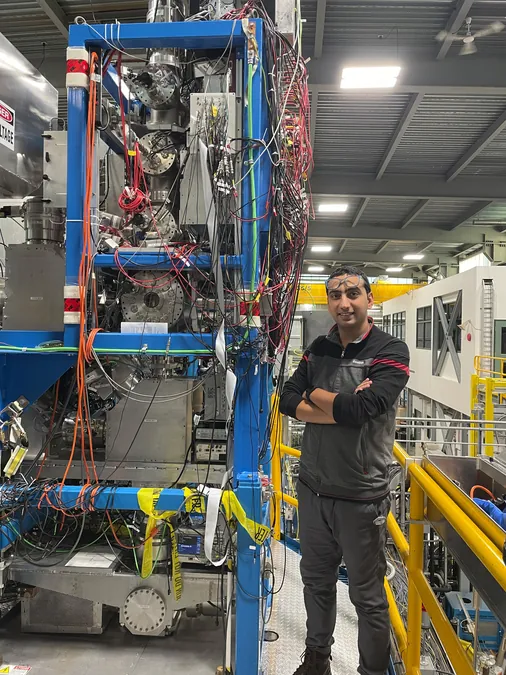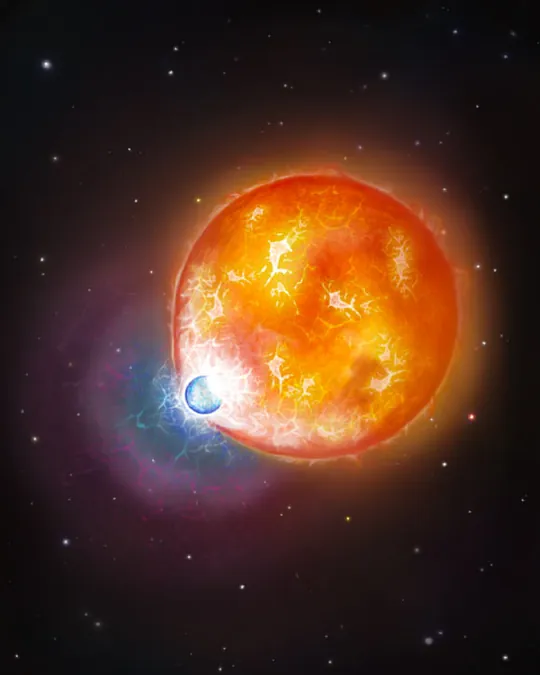
Unlocking the Secrets of Element Formation: Heaviest Tin Isotopes Shed New Light
2025-07-02
Author: William
Groundbreaking Research on Tin Isotopes
In a thrilling international collaboration, a team of scientists from GSI/FAIR in Darmstadt, Germany, has made groundbreaking strides in understanding the universe's most elusive heavy elements. Their focus? The fascinating world of r-process nucleosynthesis, explored through meticulous measurements at the TRIUMF research center in Vancouver, Canada.
Discovering the Power of Neutron-Rich Isotopes
At the heart of this study are three extraordinarily neutron-rich tin isotopes: tin-136, tin-137, and tin-138. Published in the prestigious journal *Physical Review Letters*, these high-precision mass measurements not only deepen our knowledge of how heavy elements are produced—especially during the cataclysmic mergers of neutron stars—but they also redefine our understanding of the nuclear processes that govern element formation.
The Mysteries of Neutron Separation Energy
The research revealed crucial insights into neutron separation energy, an essential factor that maps the r-process's trajectory on the nuclear chart. Surprisingly, the team noted unexpected shifts in the behavior of tin nuclei beyond the magic neutron number N=82, highlighting a remarkable reduction in pairing effects among the final two neutrons. This revelation could have far-reaching implications for the r-process path and the stability limits of elements in this nuclear region.
Expert Insights on the Implications
Dr. Ali Mollaebrahimi, lead author and spokesperson for the project, emphasized the significance of these findings: "These changes could potentially alter our understanding of nuclear forces far removed from stability. By combining our precision measurements with advanced isotope production techniques and theoretical models, we're uncovering the complex dynamics of nucleosynthesis like never before."
Innovative Techniques at TRIUMF
Central to this pioneering research was a multiple-reflection time-of-flight mass spectrometer (MR-TOF-MS), innovatively tailored for the TITAN facility at TRIUMF. This technology, developed by the IONAS group and GSI/FAIR, enabled the successful capture of exotic isotopes, paving the way for further scientific exploration.
A Milestone in International Collaboration
Dr. Timo Dickel, leader of the GSI/FAIR's "Thermalized Exotic Nuclei" research group, celebrated the collaboration's achievements, stating, "This effort is a testament to the enduring partnerships between research teams from Germany and Canada." He highlighted the MR-TOF-MS's prior successes, including the momentous discovery of ytterbium-150.
A Bright Future for Nuclear Research
The results of this study represent a vital contribution to the ongoing FAIR Phase 0 initiatives, which focus on training the next generation of researchers with state-of-the-art experimental tools, as part of the MATS and Super-FRS Experiment collaborations.
As scientists continue to decode the secrets of our universe's most complex elements, the future of nuclear research shines brighter than ever.









 Brasil (PT)
Brasil (PT)
 Canada (EN)
Canada (EN)
 Chile (ES)
Chile (ES)
 Česko (CS)
Česko (CS)
 대한민국 (KO)
대한민국 (KO)
 España (ES)
España (ES)
 France (FR)
France (FR)
 Hong Kong (EN)
Hong Kong (EN)
 Italia (IT)
Italia (IT)
 日本 (JA)
日本 (JA)
 Magyarország (HU)
Magyarország (HU)
 Norge (NO)
Norge (NO)
 Polska (PL)
Polska (PL)
 Schweiz (DE)
Schweiz (DE)
 Singapore (EN)
Singapore (EN)
 Sverige (SV)
Sverige (SV)
 Suomi (FI)
Suomi (FI)
 Türkiye (TR)
Türkiye (TR)
 الإمارات العربية المتحدة (AR)
الإمارات العربية المتحدة (AR)